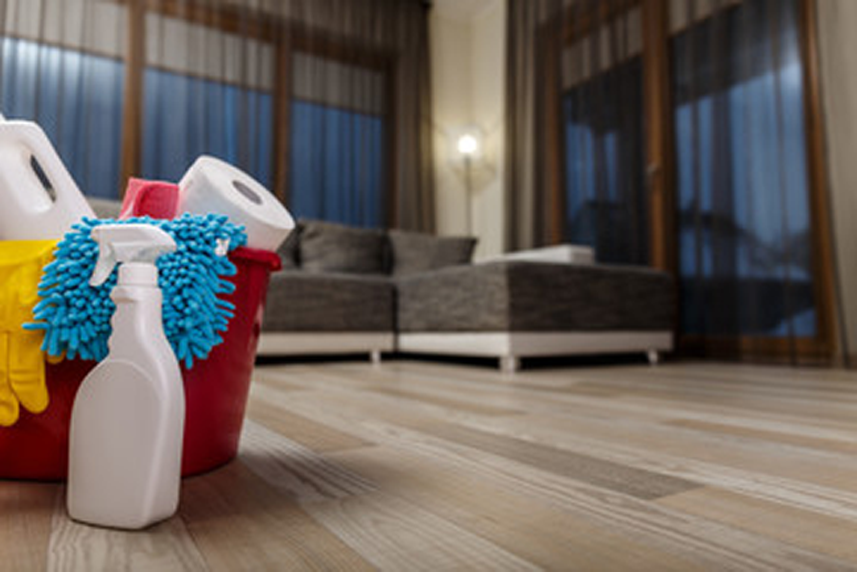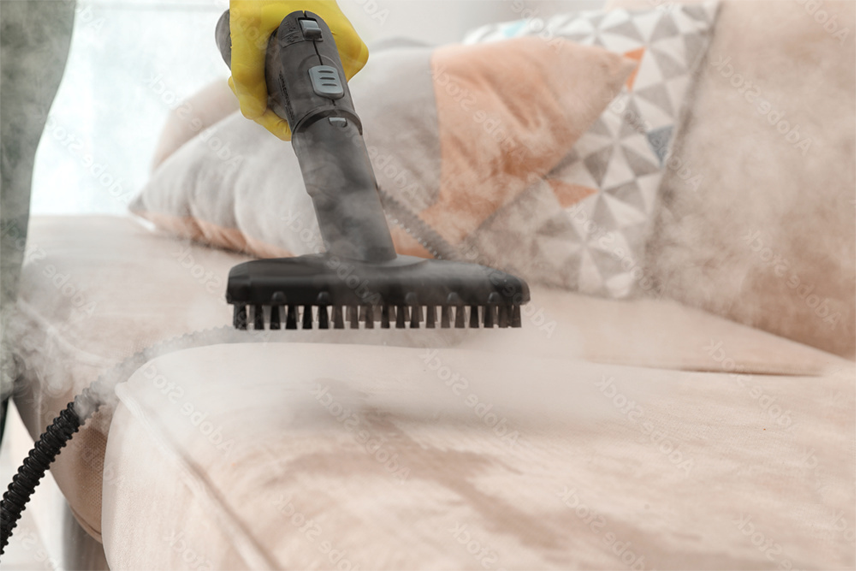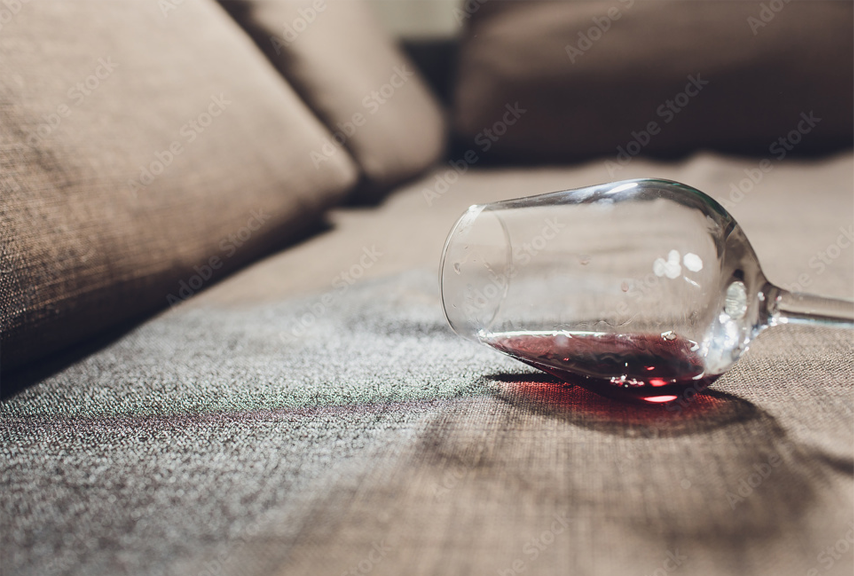The all American guide to
clean outdoor cushions
The all American guide to
clean outdoor cushions

The Importance of Regular Cleaning and Maintanance
Owning outdoor furniture is an investment. Part of that investment is your time and effort to maintain your furniture and its materials. That includes a scheduled routine to clean outdoor cushions. Outdoor furniture is exposed to elements constantly, and even the highest quality product and fabrics will eventually fade, crack, and wear down over time. You can radically slow down this process with a bit of elbow grease and know-how.
Follow our guide below to for everything you need to know on how to clean outdoor cushions to extend your patio furniture's life and get the most out of your investment.
Cleaning Supplies
As the saying goes, an artist is only as good as his tools. When it comes to the art of outdoor furniture upkeep, this saying is incredibly accurate. While much good can come from simply hosing down your furniture and outdoor patio area with water, this is hardly the solution for thorough or long-term cleaning. To get a proper clean, you're going to want to invest in a selection of cleaning products and accessories. These supplies should include a variety of cleaning agents, finishing or protectant sprays, as well as cleaning tools such as brushes, towels, a hose, and a vacuum.
Vacuum:
A vacuum is a beneficial tool for cleaning your outdoor furniture. There are vacuums made for outdoor and industrial use, but most people can get away with using their standard household vacuum. The upholstery attachment is excellent for removing loose debris and dust. If your cushions are tufted, be sure to gently run the attachment over any cracks, seams, or buttons.
Brushes:
While you won't be painting the next Mona Lisa with these brushes, you will be painting cleanliness and protectant solutions across your outdoor furniture investments. It is wise to have a few brushes in your cleaning kit in various bristle strengths for the different jobs that may come your way. A firm bristle brush will be effective for tough stains, like sap and bird droppings. Some fabrics will require a softer brush so as not to damage the materials. A hearty scrub brush with a turdy handle will be your best friend.
Soap:
As you can imagine, soap is a crucial element in cleaning your furniture. The good news is that you won’t need to acquire a special soap for this job. Regular old dishwashing liquid detergent is the best solution to apply to outdoor cushions and furniture. Dishwashing detergent's gentle yet practical nature makes it an all-around star for even the most challenging spots and stains. Once you've chosen a liquid soap, you'll only need about one tablespoon mixed into a bucket of water to get the job done.
Borax:
According to Wikipedia, Borax, also known as sodium borate, is a component of many detergents, cosmetics, and enamel glazes. It is used to make buffer solutions in biochemistry, as a fire retardant, as an antifungal compound, in the manufacture of fiberglass, as a flux in metallurgy, neutron-capture shields for radioactive sources, a texturing agent in cooking, as a cross-linking agent in Slime, as an alkali in photographic developers, as a precursor for other boron compounds, and along with its inverse, boric acid, is helpful as an insecticide. For our purposes, Borax is used to fight tough stains on patio cushions. It can be mixed with liquid detergent and water to create a stain-fighting duo that will leave stubborn spots shaking in their boots.
Bucket:
The perfect accompaniment for your soap is the container to hold it in. Buckets are necessary for mixing your soapy water, and in some cases, mixing your finishing solutions. You can buy low-cost buckets from your local hardware store. In our experience, two buckets are the right amount for most jobs around the yard. For huge pieces of furniture, look for the buckets in the paint mixing section of the store.
Hose:
Simple and self-explanatory, a hose is a handy tool for cleaning outdoor furniture. Not only will your hose reduce your overall time spent cleaning by quickly removing heavy layers of dirt, but it will also provide a source for creating your cleaning solutions and protectants. If you have furniture or accessories that are mounted high off the ground, your hose may end up being your only option for cleaning those hard-to-reach places.
Towels:
Having a selection of used (but clean) towels is ideal for the cleaning process. Wiping off heavy water or detail drying is best accomplished with a steady supply of towels. For furniture with reflective metal surfaces or glass, consider using a microfiber cloth to avoid scratching any surfaces.
Cleaning Methods
There is more than one right way to clean and maintain your outdoor furniture. Next, we will cover the three primary ways you can clean your furniture and accessories.
Machine Wash:
Not all outdoor cushions can be washed in the washing machine. Read the manufacturer's washing directions on the tag. Before starting, consult the manufacturer's website for specific cleaning instructions if no label is available. Before putting the covers and cushions into the washing machine, vacuum them.
Vacuuming eliminates dirt and debris that has accumulated on the floor. If you don't have time to vacuum your cushions, give them a thorough shake before putting them in the washing machine. For a higher likelihood of eradication, pretreat any stains before washing.
Replace cushion coverings while they are still somewhat moist since this allows the cover to stretch back into place more readily. If your machine dries the cushions, take them from the dryer before they are totally dry and lay them back over Their inserts to avoid mishaps.
Hand Wash:
When feasible, vacuum the patio cushions with the covers removed to eliminate all dust and loose dirt. Clean all seams, buttons, and crevices of tufted cushions with a crevice tool. Fill a bucket halfway with warm water and add the dishwashing liquid and Borax. Apply a generous amount of the soapy solution to your outside cushions using a sponge. Allow 15 minutes for it to soak.
Use a clean cloth to soak up as much extra water as possible before cleaning sofa pillows. Using a garden hose, rinse the pillows until no more suds emerge. A pressure washer should not be used since it may harm the cloth.
Wrap the cloth tightly around the pillow and squeeze it to blot. To allow optimum air circulation, place the cushion In bright sunshine or a warm area and stand up. Before reinstalling the cover, let the cushion dry completely.
Stuborn Spots, Stains, and Special Casdes
Most stains from mother nature will be fairly easily removed with soap and water. For all other stains, you will need some special instructions. Look below for the problem you are facing and the best method for dealing with it.
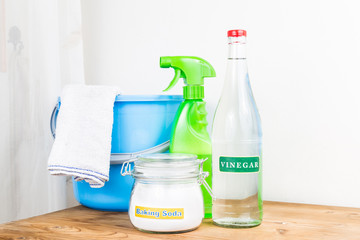
Vinegar
Vinegar Cleaning outdoor cushions with vinegar is a natural cleaning approach. Fill a spray bottle with 14 cups of distilled white vinegar and 4 cups of warm water. Spray the solution on the cushions after vacuuming the area and let it sit for 15 minutes. Scrub any stained spots with a gentle brush. Allow the air to dry after rinsing with water.
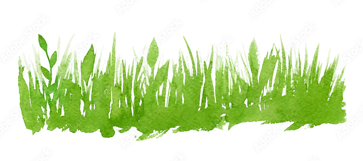
Grass
Pretreat grass stains with a heavy-duty liquid detergent before attempting to remove hem from outdoor textiles. Due to their stain-removing enzymes, certain detergents, such as Tide or Persil, serve as the first line of defense.
Work the detergent into the stain with a gentle brush. After rinsing thoroughly with clean water, soak the area in oxygen bleach and warm water solution for one hour. After soaking, wash the entire cushion, then rinse and dry it.
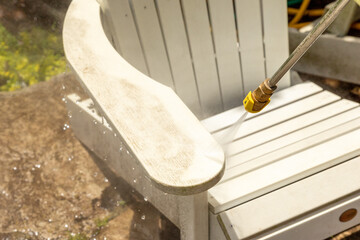
Mold and Mildew
Use a nylon brush to scrape away as much mold and mildew as possible before using a stain remover to clean outdoor cushions. If desired, vacuuming or shaking can be done after the brushing.
To make a cleaning solution, combine the Borax and warm water. Apply the solution thoroughly to each cushion with visible mold and mildew using a sponge or brush. Allow drying after blotting the discolored area with a microfiber towel and rinsing with water.
Allow the cleaning solution to soak for up to 30 minutes before beginning to blot tough spots. If Borax isn't powerful enough to remove mold and mildew stains off patio furniture, try Oxiclean or a cleaning solution made from equal parts hydrogen peroxide and water.
Another DIY cleaning solution for moldand mildew stains is one tablespoon of bleach combined with one pint of water. When using bleach or hydrogen peroxide, always test a tiny area first because discoloration might develop.
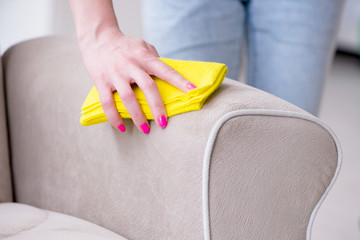
Oil
Food oil, insect spray, sunscreen, and other substances frequently get up on your outdoor seats. If left untreated, these oils attract even more dirt and grime, creating unattractive stains on your outdoor furniture. Rub Fels-Naptha soap directly over the residual stain and then rinse for persistent oil-based stains.
A dry absorbent powder, such as corn starch or baking soda, is the most delicate DIY oil stain remover. Blot up as much excess oil as possible with a clean towel before applying the dry powder. Allow 15 minutes for the powder to absorb into the stain.
Scrape the dust away with a straight edge and reapply powder if necessary. Spritz the area and wipe with a towel until the stain is gone using a natural cleaning solution. Using a wet microfiber towel, rinse.
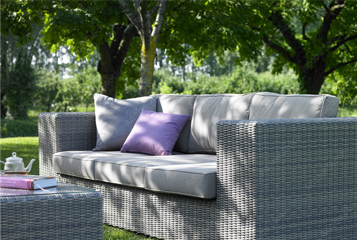
Tree Sap
Because of its particular composition, tree sap needs extra care. The waxy/oily component of the stain should be treated first using an enzyme-based stain remover. Apply the stain remover immediately on the oily stain and let it soak for 15 minutes to break it up.
Next, combine powdered laundry detergent and water to form a paste. Use a soft bristle brush to apply the paste directly to the stain, gently cleaning it away.
Rinse the area with hot water and then wash as directed by the manufacturer, using the most scalding water available. Wash the sap with detergent and oxygen bleach to eliminate any color.
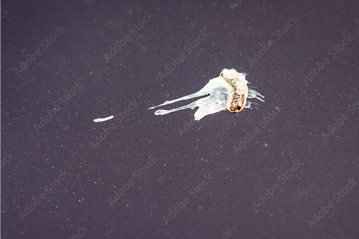
Bird Droppings
Allow the mess to dry and remove as much as possible before applying a pretreating stain remover to the bird droppings. Wipe away as much as you can using a microfiber towel or cloth.
Blueberry stains on cotton may also be removed using this approach. Shake a spray bottle full of water, Borax, and dish soap to combine. Allow the solution to rest for a few minutes after spraying it immediately on the bird dropping.
Allow the cleaning solution to remain for several minutes after working it into the stain with a soft-bristle scrub brush. Allow the cushion to air dry after rinsing away any soap residue with clean water.
This simple combination may also be used to clean plastic patio furniture to remove dirt and grime accumulated due to exposure to the weather. Spray on the furniture, scrub with a soft-bristled brush or an old rag, and then rinse well. Wipe with a damp cloth or let air dry.
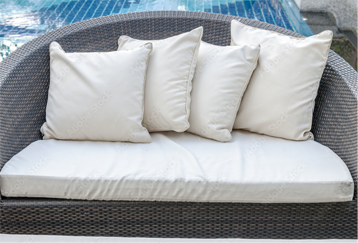
Water Stains
Water damage, such as fading, is not repairable on cushions. The easiest method to avoid water damage is to ensure your pillows are properly dried every time they get wet. Unzip the coverings on patio furniture cushions and drain all the water. To speed up the drying process, place all pillows on their edges. Bring them inside and use a blow dryer if it's too chilly outside for them to dry correctly. Mold and mildew are less likely to occur if you dry the cushions quickly.
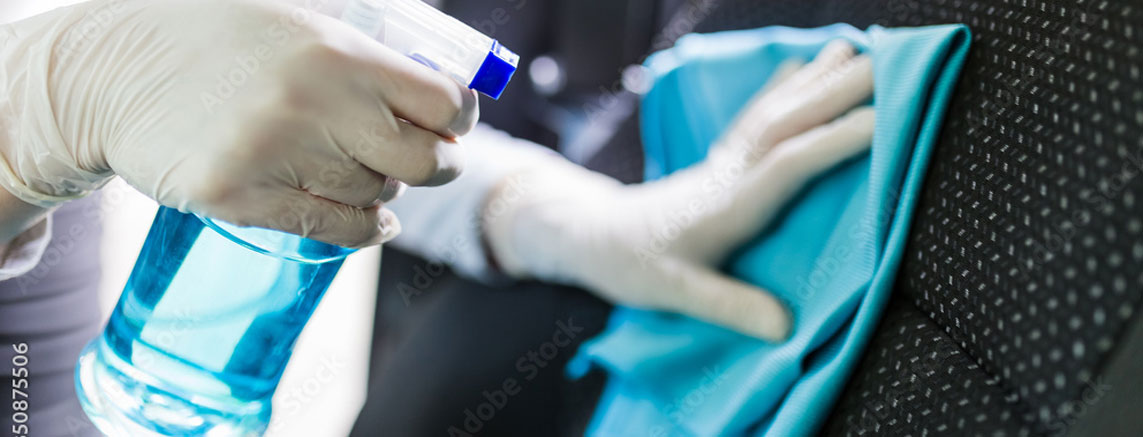
Stain Prevention and Weatherproofing
Spray a fabric protector on your patio cushions once they've dried. For several months after, the fabric protector will repel dirt and stains, making it simpler to keep your cushions clean during the months when they are used the most. Scotchgard Water & Sun Shield is a product that we strongly suggest.

 Layout 2
Layout 2 Layout 3
Layout 3